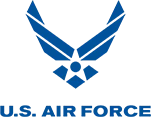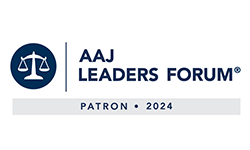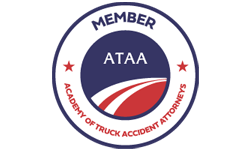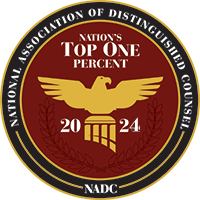A groundbreaking medical research study regarding the link between Camp Lejeune water and increased cancer rates is slated for publication. It’s expected to show how researchers concluded that there’s a positive correlation between service members stationed at this North Carolina marine base between 1953 and 1985, when water contamination issues existed, and an uptick in cancer rates among them.
At continuum, we’ll provide you with more information about the sample population assessed and provide additional details on findings that lead study authors to establish a connection between the base and increased rates of disease.
What To Know About the Population Studied
Researchers performed what’s referred to in the epidemiology field as a cohort study. It involves following populations with characteristics in common for a specific amount of time to determine if they’re affected by a similar health outcome.
We mention how these studies work because, in this case, researchers sampled a population of service members and civilians stationed or working on either Camp Lejeune (in North Carolina) or Camp Pendleton (in California) between 1972 or 1975 and 1985. While the presence of contaminated water at Camp Lejeune has since been confirmed during that period, it’s not believed that Camp Pendleton had the same issue.
The overall sample size evaluated is quite large. It includes:
- 154,821 members of the Navy or Marines and 6,494 civilian workers from Camp Lejeune
- 163,484 service members and 5,797 civilians from Camp Pendleton, all from the same time frame
What the Comparative Analysis of Cancer Rates Shows
Researchers combed through national cancer registries, looking for data on individuals tied to one of the two military bases referenced above from the era in question. They identified the following amount of affected patients:
- Camp Lejeune: 12,083 service members and 1,563 civilians
- Camp Pendleton: 12,144 service members and 1,416 civilians
To make the above-referenced data easier to understand, those numbers translate to the following per-capita cancer diagnosis rates:
- Then active-duty military personnel: 354 per 100,000 at Camp Lejeune versus 335 per 100,000 at Camp Pendleton
- Civilians: 1,301 per 100,000 for those from Camp Lejeune as opposed to 1,372 per 100,000 at Camp Pendleton
Given the data outlined above, it’s understandable that you may wonder how such a subtle difference between the disease rates among one base’s sample population and another warrants a title highlighting how notable cancer is among those formerly associated with Camp Lejeune. It comes down to the incidence of certain types of cancer. The latter population has been diagnosed with an increasing number compared to the other sample — those from Camp Pendleton.
Some Cancer Diagnoses Are Particularly High Among Camp Lejeune Service Members
The study’s authors relied on two statistical methods to convey data, including:
- A hazard ratio (HR), which is an index or scoring system, that aided them in comparing Camp Lejeune and Camp Pendleton cohort cancer incidence rates and relied on the use of survival methods when calculating it.
- A confidence interval (CI) ratio (also CIR), which helped authors tabulate “precision of effect estimates,” which were evaluated at a 95% confidence rate.
When comparing data from the population sample of then-active-duty Navy or Marines only at Camp Pendleton and Camp Lejeune (data which we’ve listed in that order next to each variety of the illness below), researchers found that those previously stationed at the North Carolina base had notably higher cancer rates when it came to the following types of the disease:
- Acute myeloid leukemia: 1.03 and 1.85
- All myeloid cancers, including polycythemia vera: 1.03 and 1.49
- Myelodysplastic and myeloproliferative syndromes: 1.07 and 2.62
- Polycythemia vera alone: 0.94 and 2.11
- Cancer of the esophagus: 1.03 and 1.56
- Cancer of the larynx: 0.98 and 1.50
- Cancer of the soft tissue: 0.92 and 1.59
- Thyroid cancer: 1.03 and 1.45
As for civilian workers employed at the two military bases during the time period in question, researchers identified some of the following differences between Camp Pendleton and then Camp Lejeune rates of disease (they’re listed in that order next to each type of illness below):
- All myeloid cancers, including polycythemia vera: 0.83 and 2.36
- Squamous cell lung cancer: 1.10 and 2.41
- Female ductal breast cancer: 1.02 and 1.71
The researchers were clear to point out that they performed sensitivity analyses to assess whether there were any other potential risk factors like alcohol use or smoking that would have significant cancer rates and determined that they would not have. Since they deemed this not to be of remarkable importance, the authors concluded that there is indeed a direct correlation between the water contamination at Camp Lejeune and an increased cancer risk.
What To Do if Camp Lejeune Water Contamination Adversely Impacted Your Health
You put in your time serving your country, yet little did you know that in the years that followed, long after you’d moved on from Camp Lejeune, you’d receive a proverbial “punch in the gut” when you received an unexpected cancer diagnosis. While you can’t, unfortunately, turn back the clock and make the harrowing experience you had to endure in fighting this debilitating illness go away, you can recover compensation for any lingering or current bills you have and potentially the pain and suffering, mental anguish, and other ways it affected you and your quality of life.
Right now, there’s a looming deadline of August 10, 2024, so just over six months from now, by which you must file a Camp Lejeune claim to be eligible to recover compensation for any losses you may have incurred due to this water contamination issue.
Submitting this claim can’t be done in just a few minutes. There’s paperwork, including records showing you were stationed at the NC marine base and medical records, that have to be secured before submitting your claim. Filing a notice of claim has to happen before the actual one is submitted, too. Knowing all the steps you must take can be confusing and time-consuming, which is where our legal team at Frost Law Firm, PC, can help. We can take care of virtually everything for you.
Meeting with an attorney who handles Camp Lejeune water contamination claims for a consultation is completely free. Our firm also works on a contingency basis, so you don’t have to worry about having to cover attorneys’ fees unless we secure a settlement for you. So, if you previously were stationed at Camp Lejeune between the early 1950s and late 1980s and have been diagnosed with cancer, contact our law office to discuss your situation so we can advise you of your rights to take legal action. Time is of the essence, so don’t delay.




















